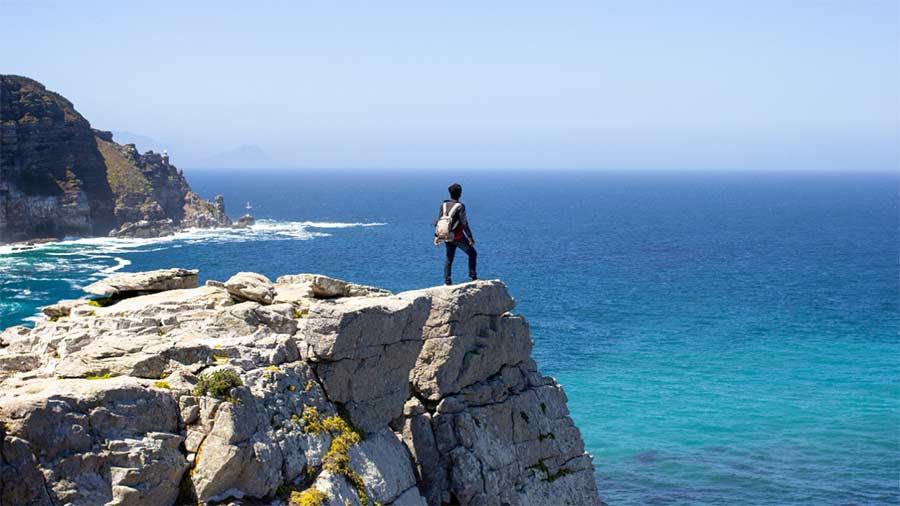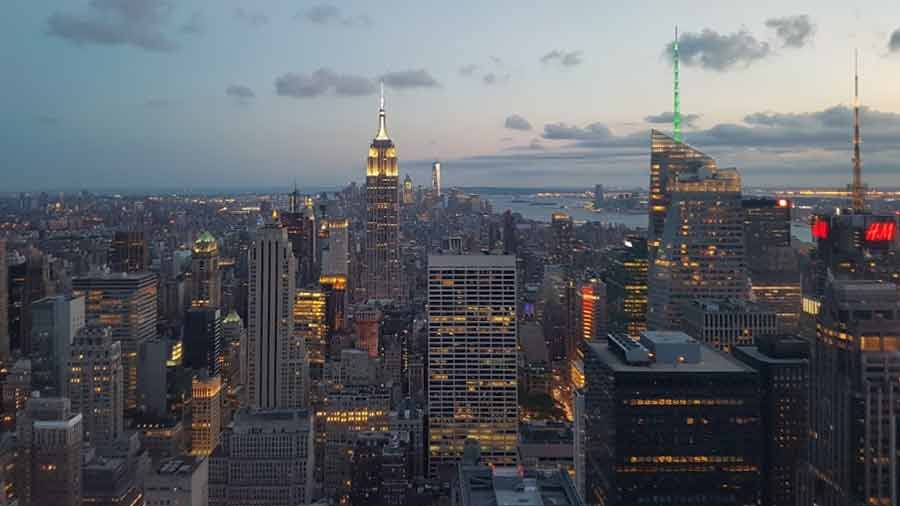Most people still assume that Cape of Good Hope is the southernmost tip of Africa. It’s a common misconception that this is the dividing point between the Atlantic and the Indian oceans. Most of my fellow travellers on a short coach tour from Cape Town were also under the same impression as we embarked on one of the most scenic drives in Africa. One of them called it “a journey to the end of Africa”. The truth is that point lies 150 kilometres to the east-southeast, at Cape Agulhas. It’s probably the legends that surround Cape of Good Hope that have fuelled this popular misconception. That’s not the only reason why I’d recommend a day in and around the Cape if you’re ever in South Africa.
The fairest Cape in all the world
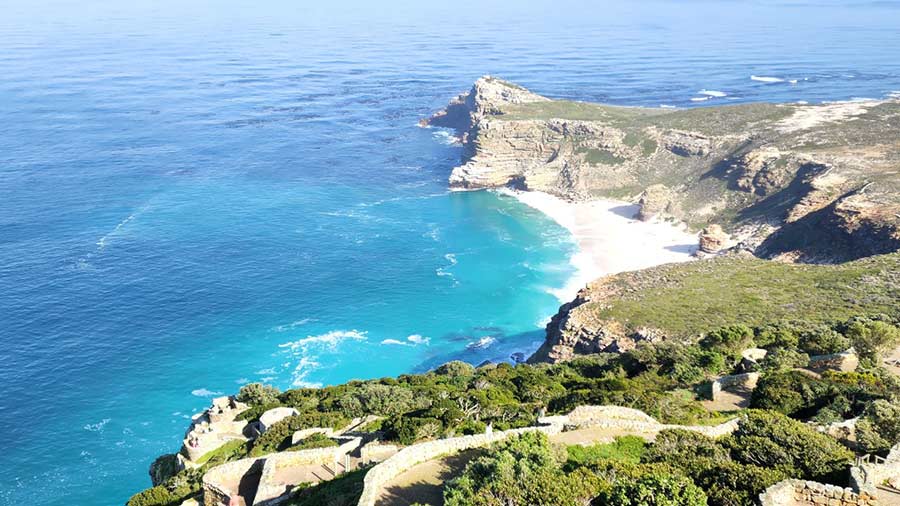
The Cape of Good Hope was originally called Cabo das Tormentas (Cape of Storms) Ashwin Rajagopalan
The Portuguese quest for a sea route to the East first brought Bartholomew Dias to these parts in 1487. He called it Cabo das Tormentas (Cape of Storms). Over the years, this point acquired its moniker as a graveyard of ships thanks to extreme weather and storms that saw it become a venue for hundreds of shipwrecks including the legend of the Flying Dutchman. Thankfully the ‘Cape of Storms’ name was short-lived. It was quickly renamed Cape of Good Hope by John II of Portugal because of the optimism that came with the opening of a sea route to India and the East. It was the same route that Vasco da Gama would take to arrive in India in 1498; a significant voyage that altered the course of world history and was the beginning of a new phase of global multiculturalism. Sir Francis Drake called it the Fairest Cape in the whole world back in 1579; I agree.
Staggering views
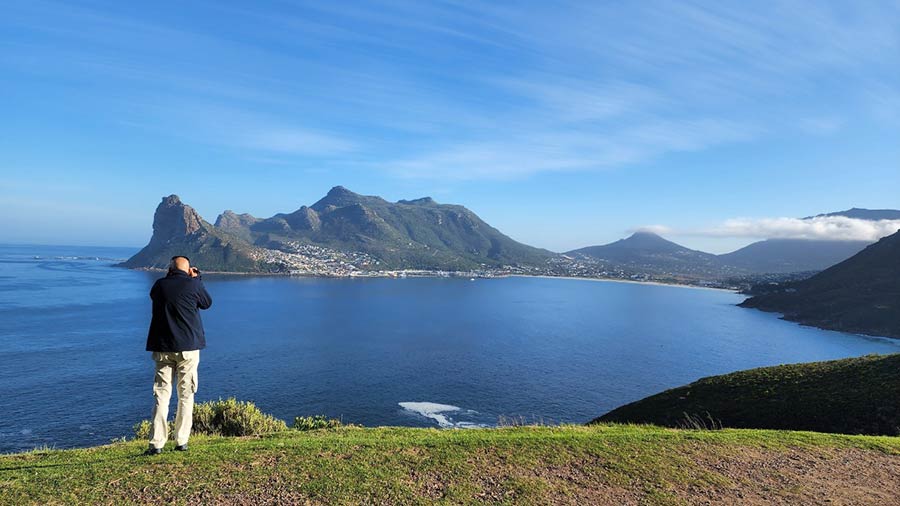
Most day-trippers make the customary photo stop at Chapman’s Peak lookout that overlooks the scenic town of Hout Bay Ashwin Rajagopalan
My path to the Cape of Good Hope was less stormy. It took me through the Chapman’s Peak Drive, a gorgeous drive that hugs the ocean from high cliff. It was hacked out of the face of the Table Mountain Range between 1915 and 1922, a significant architectural feat back then. Most day-trippers make the customary photo stop at Chapman’s Peak lookout that overlooks the scenic town of Hout Bay. You will hear of the legend of John Chapman, the pilot of an English ship who came ashore in 1607 to find provisions and lent his name to this imposing peak.
The Flying Dutchman

The stairs leading to lighthouse on Cape Point Ashwin Rajagopalan
The legend of the Flying Dutchman lives on at Cape Point near Cape of Good Hope. This is not the mythical ship that is believed to have sunk in the 17th century around the cape, but a funicular that takes you to the best vantage point next to the lighthouse at the Cape Point with 360-degree views of the ocean and the surrounding mountains. Cape of Good Hope is a haven for outdoor enthusiasts with myriad hiking, surfing and cycling opportunities.
A colony for penguins

Simon’s Town is home to the Boulders Penguin Colony — one of the last refuges of the endangered African penguin Ashwin Rajagopalan
After spending most of the morning exploring the Cape Peninsula that’s part of the Table Mountain National Park, it was time to head to Simon’s Town. This idyllic beach town is home to the Boulders Penguin Colony one of the last refuges in the world of the endangered African penguin. It includes a penguin viewing area and three boardwalks that allow you to view these birds from a safe distance. It keeps the penguins away from harm’s way and overenthusiastic tourists. In 1956, when the first full census was conducted on the African penguin, there were approximately 1,50,000 breeding pairs counted. In 2009, there were only 26,000 breeding pairs left in the world. It underlines the important role Boulders Penguin Colony plays in the conservation of this endangered species.
A colourful slice of history
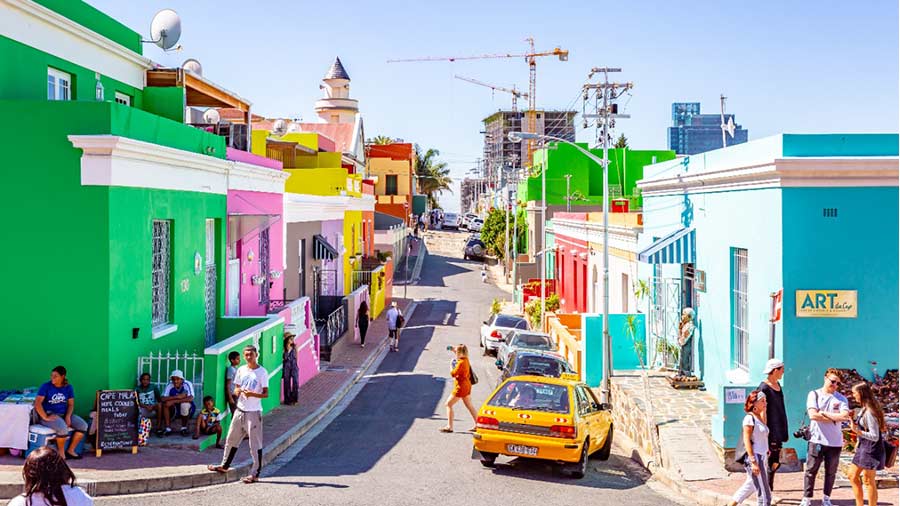
Bo-Kaap, one of Cape Town’s most photogenic neighbourhoods Shutterstock
I wrapped up my morning with a splash of colour at Bo-Kaap, one of Cape Town’s most photogenic neighbourhoods. Bo-Kaap translates to ‘above the Cape’. This was once the city’s Malay quarter, with brightly coloured home and cobblestone streets. Bo-Kaap still contains the largest concentration of pre-1850 architecture in South Africa. Modern Cape Town developed from the colony set up at Cape of Good Hope by the Dutch who brought many slaves from the Dutch East Indies (Indonesia) and Dutch Malacca (that also included people of Indian origin). The British abolished slavery in the 19th century after they occupied the area. Most freed slaves began flocking to Cape Town, which was the only centre of Islamic faith back then in the region. They came to be known as the Cape Malays and also developed their own cuisine with Indian and Southeast Asian influences. Most regulars always order Bobotie, a South African casserole. I ended my Cape adventure with a delicious meal at Bo-Kaap Kombuis (kitchen). The perfect finish to a day full of spectacular sights.
